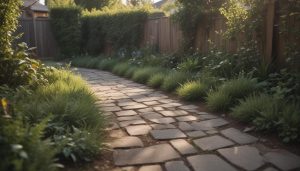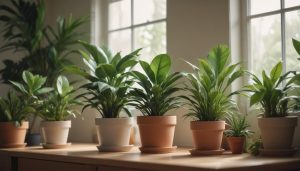Why Smart Home Gardening Trends Matter in 2025
Daniel Fisher August 25, 2025
Explore the fascinating world of home gardening as it evolves in 2025. This guide brings together smart garden tools, eco-friendly landscaping, trending designs, and insider tips to nurture your space—while being both practical and inspiring.
Healthy Soil: The Foundation for 2025 Gardens
Good soil quality is vital for any thriving home garden in 2025. Whether starting a container project, planning raised beds, or growing edibles, understanding your soil’s makeup sets the stage for everything. Gardens with nutrient-rich earth produce stronger plants and demand less intervention, leading to sustainable outcomes. Homeowners are increasingly turning to soil test kits and online resources from extension agencies to identify and address deficiencies. This attention to healthy soil reflects a shift toward eco-conscious gardening, where enriching the ground supports robust landscaping with less chemical dependency.
Poor soils don’t mean abandoning your green dreams. Amendment techniques—think adding compost, worm castings, or organic matter—remain essential in 2025. Residents in urban areas find raised beds and container systems useful for controlling soil quality from the start. These approaches foster root health and encourage beneficial microbes, leading to healthier harvests and more resilient ornamentals. Embracing organic amendments also aligns with broader sustainability goals and delivers better yields season after season.
Testing isn’t limited to pH or nutrient levels. In 2025, more home gardeners look for contaminants, salinity, and moisture retention. Technology plays a supporting role—digital meters and smart soil sensors offer real-time data. This approach reduces guesswork and costly mistakes. With the right foundation, gardeners can experiment confidently with edibles, native plants, or drought-tolerant species that match their unique region.
Smart Tech for Effortless Home Gardening
Smart gardening technology is transforming home landscapes in surprising ways for 2025. WiFi-enabled irrigation controllers, robotic mowers, and app-connected plant sensors are more affordable and easier to use than ever. These tools let busy people manage yards from their smartphones—adjusting water schedules, receiving pest alerts, or even tracking plant growth. Many homeowners appreciate how these innovations save water, reduce waste, and optimize plant health, contributing to a cleaner urban environment.
The ecosystem of smart garden gadgets expands each year. 2025 sees solar-powered lighting integrated with weather and motion sensors, making outdoor spaces not just beautiful but energy-efficient. Indoor gardeners also benefit from new hydroponic systems that monitor nutrients and light automatically, supporting greens, herbs, or small fruits indoors. Smart systems are designed for easy integration with existing smart home platforms, which means a seamless experience for users interested in automating their gardening routines.
Tech adoption isn’t just about convenience. Data generated from home garden sensors—and shared via community apps—informs broader environmental efforts. Gardeners can even join local and global platforms to log observations, participate in citizen science, and help track pollinator activity or climate shifts. The collective impact creates new opportunities to protect biodiversity and experiment with novel plants suited for changing weather patterns.
Eco-Friendly Gardening Trends Shaping 2025
With climate awareness growing, eco-friendly gardening is a dominant trend for 2025. This approach focuses on native plant species which require less water, attract local pollinators, and demand minimal intervention. People are opting for drought-resistant shrubs, wildflower meadows instead of formal lawns, and biodiversity-friendly garden layouts. These choices naturally reduce chemical use and environmental footprint. Some public extension offices offer free guides on converting lawns to resilient landscapes, making the shift more accessible for newcomers.
Sustainable practices range from mulching with recycled materials to water-saving irrigation systems. Home gardeners are also investing in rainwater harvesting and permeable hardscape solutions to capture runoff and recharge local groundwater. Community gardens and rooftop green spaces exemplify environmentally responsible design—emphasizing plant diversity, composting, and supporting local food systems. This mindset also extends to pest control, with a preference for non-toxic solutions and habitat-friendly garden edges to draw beneficial insects.
Reducing single-use plastics and packaging is another movement gathering steam. People are repurposing containers, switching to biodegradable seed trays, and supporting nurseries prioritizing eco packaging. As a result, eco-gardening not only benefits the environment but often leads to healthier, more beautiful home landscapes. It’s a win-win for those who want their outdoor sanctuary to reflect and support their values in 2025.
Stylish Outdoor Living Spaces for Every Home
Gardening in 2025 goes beyond planting—it’s about creating holistic outdoor living environments. From balcony retreats to expansive patios, homeowners look for inspiration that fits their unique space and budget. Trends highlight mixed-material decking, upcycled furnishings, container gardens full of texture, and the use of native grasses and perennials as living privacy screens. Cozy fire pits, low-voltage lighting, and multi-functional seating let these spaces transition from day to night—supporting year-round enjoyment without excessive maintenance.
Designers and garden experts recommend zones: a dining area, a place for relaxation, and a green spot for herbs or cut flowers. Incorporating vertical gardens or green walls helps maximize limited urban patios, while pergolas and shade sails create comfortable retreats from the elements. Water features—like bubbling fountains, miniature ponds, or rain chains—add calm and foster biological diversity, while well-placed planters bring structure and color even to small nooks.
Personal expression shines through with artful containers, custom-made trellises, and heritage plant varieties. This blending of style, comfort, and natural elements makes outdoor spaces feel like a true extension of the home in 2025. Many homeowners leverage online platforms and design apps to visualize and plan their projects, finding sustainable ideas that match their aesthetic while meeting the unique needs of their family and region.
Gardening for Food: Edible Landscapes Thrive
Edible gardening sees tremendous growth in 2025 as homeowners embrace food security, health, and taste. Raised beds, container-grown vegetables, and dedicated herb gardens are now mainstream. Urban dwellers use vertical planters, hydroponics, and even window boxes to enjoy fresh produce. This shift connects families to food sources, encourages healthy diets, and supports resiliency during supply chain changes.
The trend isn’t just about traditional vegetables. Berry bushes, dwarf fruit trees, and pollinator-attracting companion plants all feature prominently, making edible landscapes visually compelling as well as practical. Composting food scraps and integrating organic mulch help maintain soil fertility. Some gardeners collaborate through neighborhood seed exchanges or online forums to broaden their crop diversity and learn from experienced peers. This sense of community strengthens enthusiasm and sustains motivation—especially for newcomers tackling their first edible beds.
Garden experts stress crop rotation and organic care methods to protect soil and plant health year after year. Integration of smart irrigation, pest alerts, and weather-based fertilization schedules streamline success, even for busy households. Homegrown food, even in small quantities, provides immense satisfaction and environmental benefit. In 2025, the concept of backyard-to-table becomes not just a trend but a practical lifestyle choice for many households.
Low-Maintenance and Accessible Designs for Every Gardener
Not everyone has time for intensive gardening, and in 2025, the focus on low-maintenance and accessible designs grows. Perennial plantings, automatic watering systems, and mulch layers take much of the work out of gardening while still offering color and interest. Raised beds and wide pathways help create accessible spaces for people of all ages and abilities. Homeowners and renters alike seek tips to simplify upkeep—yet still enjoy a lush, inviting yard or patio.
Native plant species and groundcovers outperform traditional lawns in many regions, requiring less mowing and supporting pollinators naturally. These selections stand up to local pests and weather extremes, helping gardens thrive with minimal touch. Smart gardening tools—like battery-powered trimmers or app-controlled drip systems—reduce labor and provide independence for older adults or those with mobility challenges. Resourceful design makes home gardening truly inclusive.
Online resources, community workshops, and demonstration gardens offer advice on adaptive gardening techniques. Techniques such as vertical gardening, raised containers, and ergonomic tools help everyone participate. As environmental awareness and interest in homegrown food climb, more resources emerge to ensure gardening is approachable and rewarding for people with every kind of lifestyle—no matter their space or schedule in 2025.
References
1. University of California Agriculture and Natural Resources. (2025). Home Gardening Publications. Retrieved from https://ucanr.edu/sites/GardenWeb/
2. United States Environmental Protection Agency. (2025). Sustainable Landscaping Practices. Retrieved from https://www.epa.gov/greenscapes
3. National Gardening Association. (2025). Edible Landscaping and Urban Gardens. Retrieved from https://garden.org/learn/articles/view/3204/
4. Royal Horticultural Society. (2025). Low-Maintenance Gardening. Retrieved from https://www.rhs.org.uk/advice/profile?pid=174
5. North Carolina State Extension. (2025). Gardening with Native Plants. Retrieved from https://gardening.ces.ncsu.edu/native-plants/
6. The Spruce. (2025). The Rise of Smart Garden Technology in Homes. Retrieved from https://www.thespruce.com/smart-gardening-5199116







